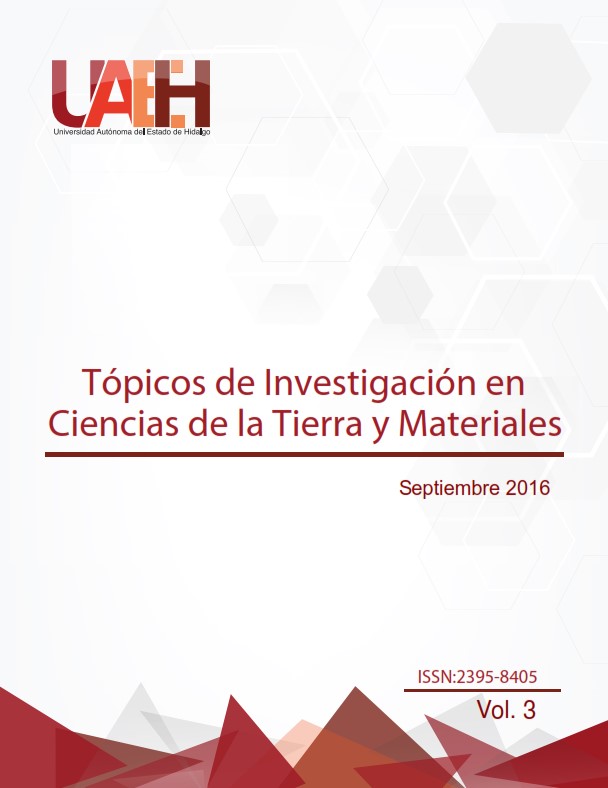Copper leaching from dust generated by grinding computer printed circuit boards
Abstract
The acid leaching is the most used process for recovering copper from oxidized ores, and this is characterized by being an aggressive process with environment; so in this paper the use of thiosulfate as a leaching agent for copper is proposed, because it has the fundamental characteristic of a lesser impact on environment. To determine the effect of concentration of thiosulfate and temperature on the reaction rate in the leaching of copper from milling printed circuit boards of computers, it was conducted a preliminary kinetic study using as leaching medium O2-S2O32-, determining so that under that the following experimental conditions: [S2O32-] = 0.5M, 500 mL, 750 min-1, P/PO2 = 1atm, 5g sample, pH = 10, 338 K and a reaction time 10800 seconds, we obtained an order of reaction, n=0.18 and an energy of activation of Ea = 24,106 kJ·mol- ction. We also found that under these conditions previously mentioned it was possible is leached up to 97.35% copper in solution.
Downloads
References
[2] Y. Zhou y K. Qiu: Journal of Hazardous Materials, 2010, vol. 175, pp. 823-828.
[3] Y. F. Guimarães, I. D. Santos y A. J. Dutra: Hydrometallurgy, 2014, vol. 149, pp. 63-70.
[4] K. Huang, J. Guo y Z. Xu: Journal of Hazardous Materials, 2009, vol. 164, pp. 399-408.
[5] A. C. Marques, J.-M. Cabrera y C. d. F. Malfatti: Journal of Environmental Management, 2013, pp. 298-306.
[6] UNEP, «Recycling – From E-Waste to Resources, Final report,» 2009.
[7] R. Widmer, H. Oswald-Krapf, D. Sinha-Khetriwal, M. Schnellmann y H. Böni: Environmental Impact Assessment Review, 2005, vol. 25, pp. 436– 458.
[8] J. Szałatkiewicz: Pollution Journal Environmental Stud. 2014, vol. 23, pp. 2365-2369.
[9] J. Cui y L. Zhang: Journal of Hazardous Materials, 2008, vol. 158, pp. 228-256.
[10] I. Rivera, P. F, A. Roca y M. Cruell:, Hydrometallurgy, 2015, vol. 156, pp. 63-70.
[11] A. Akcil, C. Erust, C. S. Gahan, M. Ozgun, M. Sahin y A. Tuncuk: Waste Management, 2015, vol. 45, pp. 258-271.
[12] P. Breuer y M. Jeffrey: Minerals Engineering, 2000, vol. 13, pp. 1071-1081.
[13] M.G.Aylmore y D. Muir: Minerals Engineering, 2001, vol. 14, pp. 135-174.
[14] Octave Levespiel: Ingeniería de las reacciones químicas, tercera edición, LIMUSA, S.A de C.V. México, D.F. 2013, 566-579.
[15] S. R. Eleazar, H. Á. Juan, R. L. Isauro, C. S. Eduardo, R. V. M. Isabel, C. C. Manuel y R. M. Daniel: Hydrometallurgy, 2016, vol. 160, pp. 6-11.
[16] M. Aylmore y D. Muir: Minerals Engineering, 2000, vol. 14, pp. 135-174,.
[17] C. Abbruzzese, P. Fornari, R. Massidda, F. Veglió y S. Ubaldini: Hydrometallurgy, 1995, vol. 39, pp. 265-276.
[18] G. Senanayake: Gold Bulletin, 2005, vol. 38, pp. 170-179.











